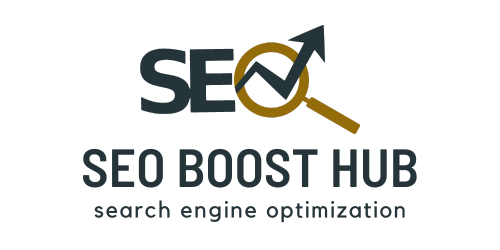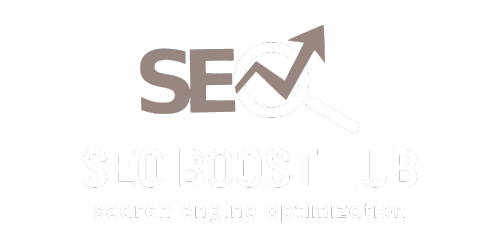Introduction: The Importance of On-Page SEO
On-page SEO is crucial to enhancing your website’s visibility, attracting relevant traffic, and improving search engine rankings. It involves optimizing individual web pages to rank higher by focusing on content, structure, and technical elements. In this guide, we’ll cover the essential components of on-page SEO and provide insights on best practices to ensure each webpage effectively communicates with search engines.
1. Keyword Optimization
Effective keyword optimization is foundational to on-page SEO. By strategically placing keywords that match user intent, you help search engines understand the relevance of your content.
Key Aspects of Keyword Optimization:
- Primary Keywords: Identify and integrate the primary keyword into key places, such as the title tag, first paragraph, headings, and meta description.
- Long-Tail Keywords: Include specific long-tail keywords to capture niche search traffic with less competition.
- Natural Integration: Place keywords naturally to maintain readability and avoid keyword stuffing, which could harm rankings.
Tools for Keyword Research:
- SEMrush: Discover high-ranking keywords and track performance.
- Google Keyword Planner: Ideal for identifying keyword search volume and competition.
2. Title Tags and Meta Descriptions
Title tags and meta descriptions are the first elements users see in search results, impacting click-through rates and rankings.
Best Practices:
- Optimize Title Tags: Keep titles under 60 characters, include the primary keyword, and create a compelling message.
- Craft Meta Descriptions: Write meta descriptions under 160 characters, summarizing the content and encouraging users to click.
Example:
- Title: “Critical Elements of On-Page SEO for Better Rankings”
- Meta Description: “Master the essential elements of on-page SEO to boost search visibility. Learn key strategies for optimizing titles, keywords, images, and more.”
3. Header Tags and Content Structure
A well-organized content structure not only improves readability for users but also helps search engines understand the hierarchy of information.
Header Tag Tips:
- H1 for Main Title: Use a single H1 tag with the primary keyword as the page’s main title.
- Subheadings (H2, H3, etc.): Break content into digestible sections using H2 and H3 tags for better structure and SEO value.
- Semantic Keywords in Headers: Integrate relevant keywords into headers to capture related search terms.
Tools:
- Yoast SEO: Analyze and optimize content structure and keyword usage.
- Surfer SEO: Provides insights on how top-ranking pages structure their content.
4. URL Structure
A clean, concise URL structure helps users and search engines understand a page’s content.
Tips for Optimizing URLs:
- Include Primary Keywords: Use the main keyword in the URL for SEO relevancy.
- Keep URLs Short and Descriptive: Shorter URLs perform better in search results and improve click-through rates.
- Avoid Special Characters: Use hyphens instead of underscores or special characters for readability.
Example:
- Good URL:
website.com/on-page-seo-elements - Poor URL:
website.com/1234&main=on-page-optimization
5. Internal Linking and Anchor Text
Internal linking improves navigation, distributes authority across pages, and keeps visitors engaged on your site longer.
Internal Linking Tips:
- Link to Related Content: Provide links to related blog posts or services to improve user experience.
- Use Descriptive Anchor Text: Instead of “click here,” use meaningful keywords in your anchor text that relate to the linked page.
Tool for Link Analysis:
- Ahrefs: Use this tool to analyze your internal links and find opportunities to improve linking structure.
6. Image Optimization
Images make content more engaging, but they need to be optimized to prevent slow loading speeds and improve SEO.
Image Optimization Tips:
- Descriptive Alt Text: Use descriptive alt text that includes relevant keywords to improve image search rankings.
- Reduce File Size: Compress images to enhance page load times without sacrificing quality.
- Use Descriptive File Names: Name images with keywords that relate to the content.
Tools for Image Optimization:
- TinyPNG: Compress images to reduce file sizes.
- ShortPixel: Offers image compression and optimization for WordPress.
7. Mobile-Friendliness
With mobile traffic on the rise, having a mobile-friendly website is crucial for user experience and SEO.
How to Optimize for Mobile:
- Responsive Design: Ensure your website’s layout adjusts to different screen sizes.
- Improve Load Speed: Compress images, minify CSS, and reduce server response time to speed up mobile loading.
- Touch-Friendly Buttons: Optimize button sizes and spacing for easy navigation on mobile devices.
Tool:
- Google Mobile-Friendly Test: Test your website’s mobile-friendliness and get recommendations for improvement.
8. Page Speed Optimization
Page speed is an essential ranking factor. Slow websites lead to high bounce rates and poor user experience.
Tips to Improve Page Speed:
- Use Browser Caching: Store parts of your website in the browser’s cache to speed up loading times.
- Minify Code: Minify CSS, JavaScript, and HTML files to reduce file sizes.
- Implement a CDN: A content delivery network (CDN) can deliver content from servers closest to users, improving load times.
Tools for Page Speed:
- Google PageSpeed Insights: Analyze and improve website speed with actionable insights.
- GTmetrix: Get detailed reports on speed metrics and recommendations for improvement.
9. Schema Markup
Schema markup is a type of microdata that helps search engines understand your content better, often resulting in rich snippets in search results.
Benefits of Schema:
- Improved SERP Appearance: Structured data can enhance listings with additional information, increasing CTR.
- Highlight Key Details: Use schema to highlight reviews, prices, events, and more.
How to Implement Schema:
- Use Google’s Structured Data Markup Helper: Easily create structured data for different content types.
- Test with the Rich Results Tool: Check if schema is correctly implemented for rich results.
10. High-Quality, Relevant Content
Content is still king, and high-quality, user-focused content is the backbone of effective on-page SEO.
Content Optimization Tips:
- Write for User Intent: Identify the purpose of each search query and create content that meets user needs.
- Focus on Readability: Use short paragraphs, bullet points, and visuals to make content easy to consume.
- Regularly Update Content: Keep content fresh and relevant by updating it periodically with new information.
Tools for Content Improvement:
- Grammarly: Check grammar and readability.
- Hemingway App: Improve readability by identifying complex sentences and passive voice.












